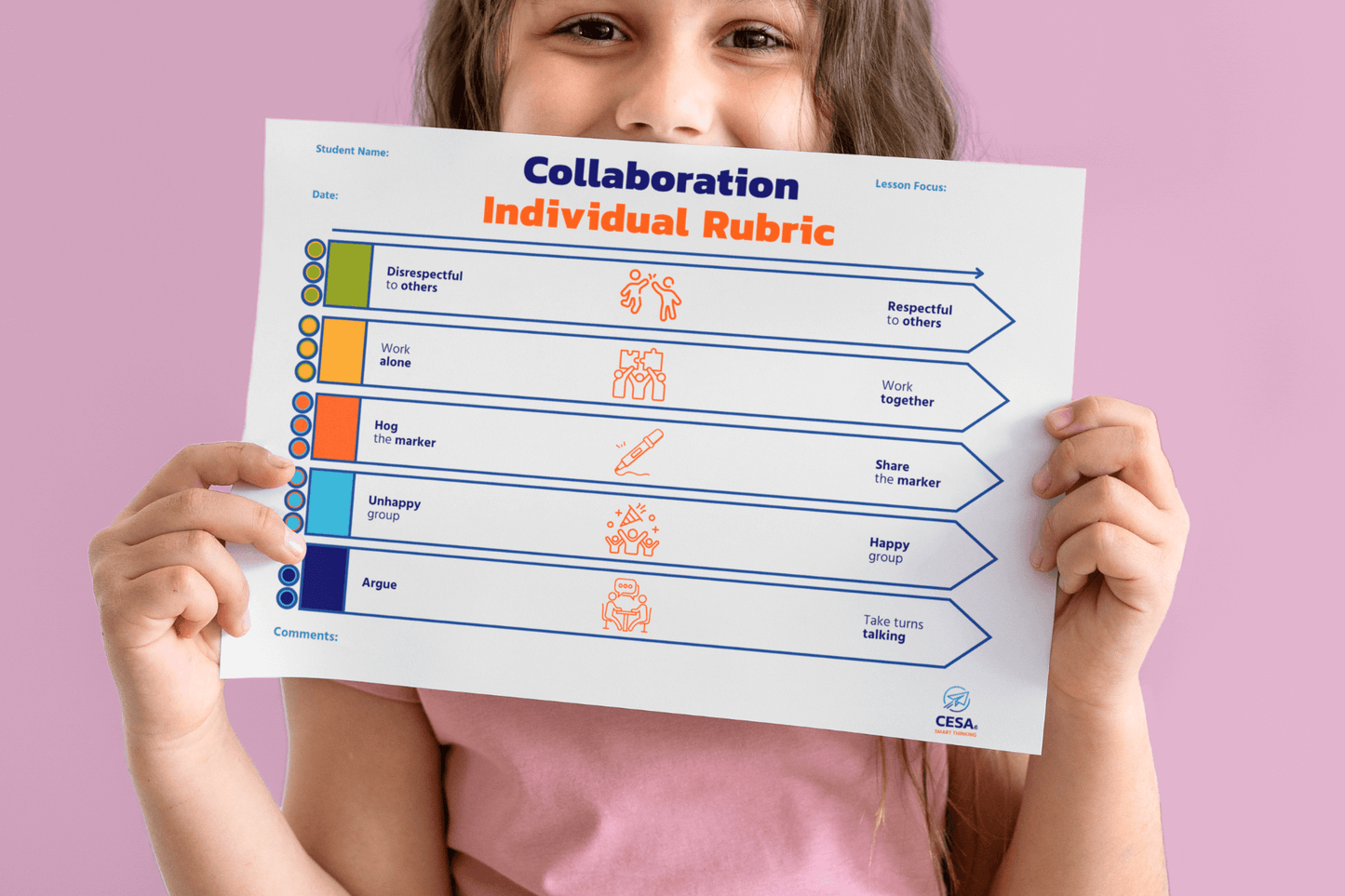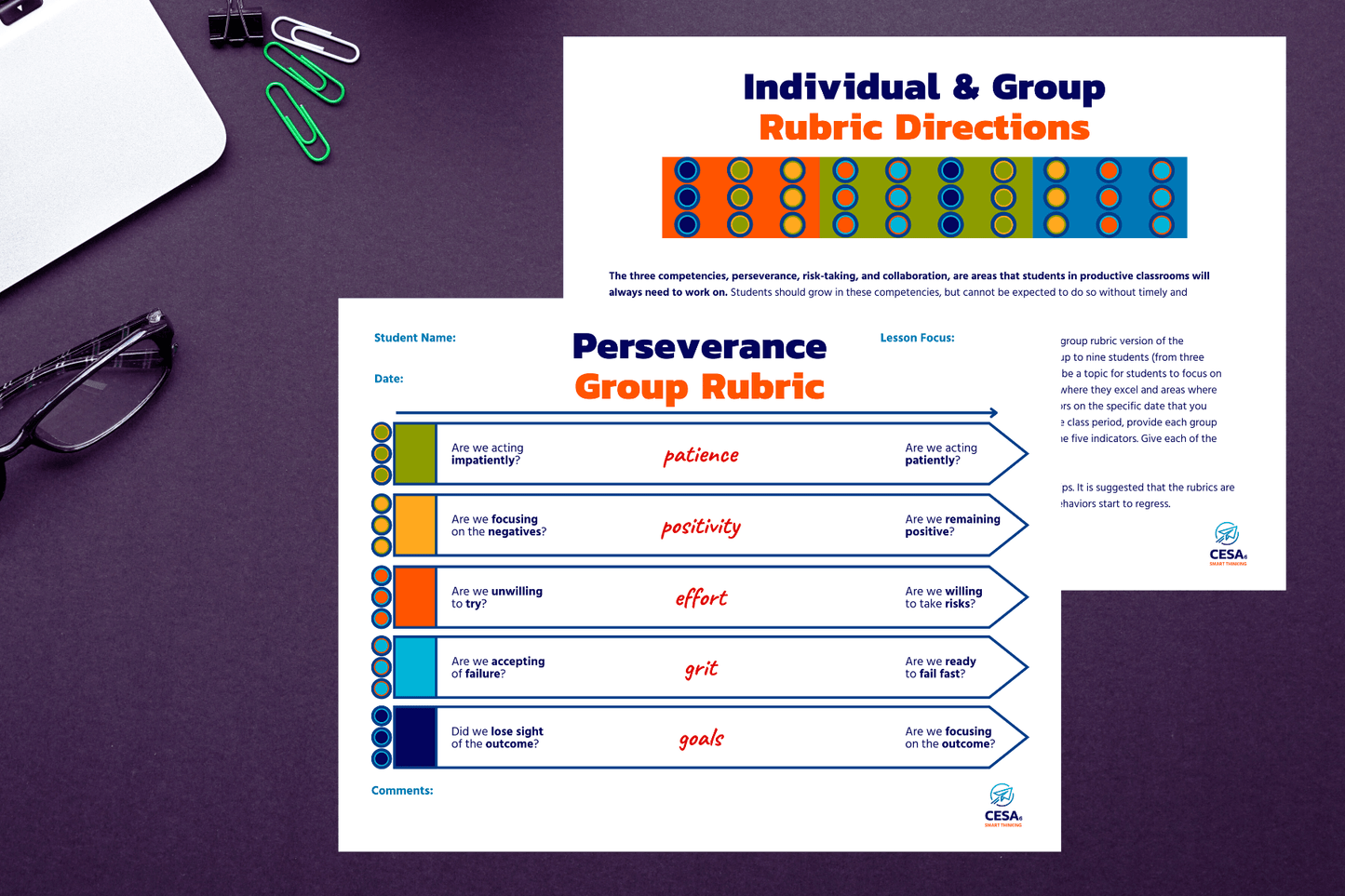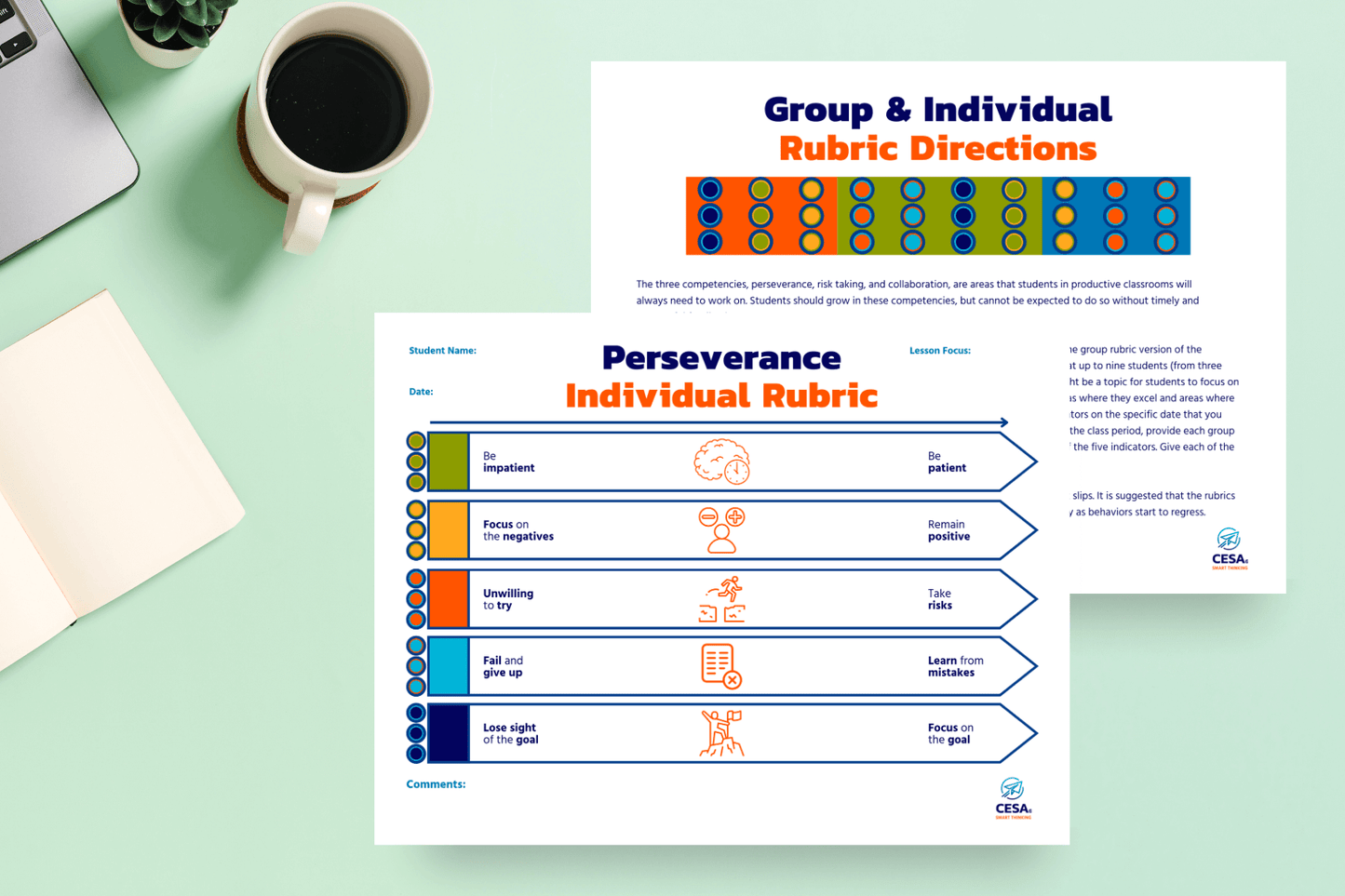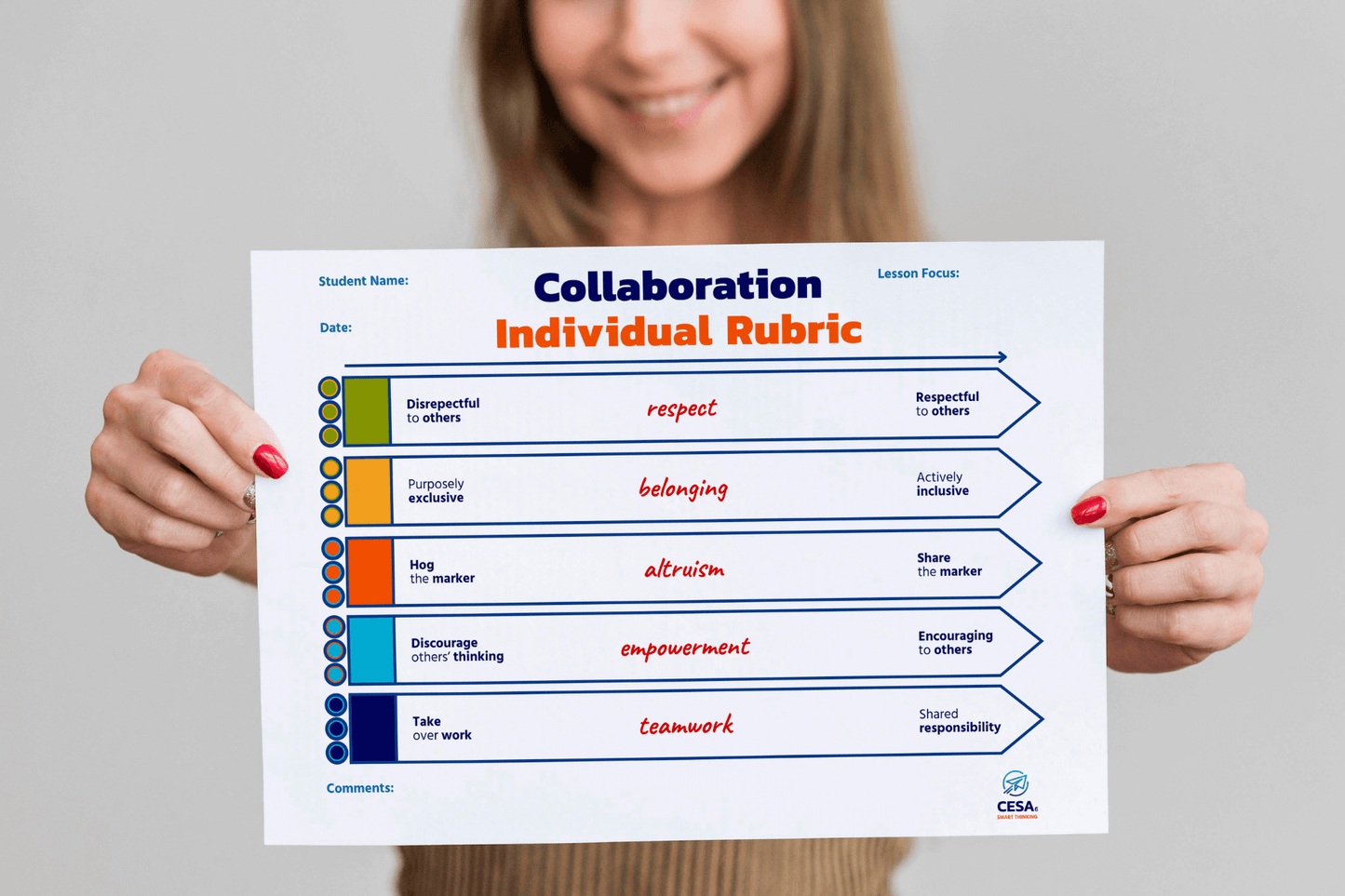Vertical Learning Engagement Rubrics for Individuals and Groups
Vertical Learning Engagement Rubrics for Individuals and Groups
Couldn't load pickup availability
Inspired by Peter Liljedahl’s Building Thinking Classrooms in Mathematics, these Vertical Learning Engagement Rubrics for Individuals and Groups help students develop essential learning behaviors: Perseverance, Collaboration, and Risk-Taking. Designed for both Elementary and Secondary classrooms, these rubrics encourage student reflection, foster a growth mindset, and promote a collaborative learning environment.
Key Features
- Student-Centered Reflection: Encourages ownership of learning behaviors.
- Group & Individual Rubrics: Supports both self-assessment and peer feedback.
- Continuum-Based Assessment: Focuses on growth rather than numerical grades.
- Skill-Specific Criteria: Defines clear expectations for classroom behaviors.
Elementary & Secondary Rubrics
- Perseverance: Staying patient, maintaining a positive mindset, and learning from mistakes.
- Collaboration: Respecting others, working as a team, and sharing responsibilities.
- Risk-Taking: Accepting challenges, exploring new ideas, and embracing failure as a learning tool.
Use these rubrics throughout the year to track student progress and foster a thinking classroom where students engage deeply and take ownership of their learning.
Type: Digital Download PDF
Elementary Rubrics: 9 pages
- Perseverance Rubrics - 1 Individual and 1 Group
- Collaboration Rubrics - 1 Individual and 1 Group
- Risk Taking - 1 Individual and 2 Groups ( K-1 and 2-5)
- Rubrics Directions
Secondary Rubrics: 7 pages
- Perseverance Rubrics - 1 Individual and 1 Group
- Collaboration Rubrics - 1 Individual and 1 Group
- Risk Taking - 1 Individual and 1 Group
- Rubrics Directions
Single Use License:
By purchasing this digital rubric, you are granted a single-user license for personal, non-commercial use. Redistribution, resale, or sharing of this material with others, whether in printed or digital format, is strictly prohibited.




-
Impactful & Affordable
Access ready-to-use tools that fit your role, your budget, and your busy schedule.
-
Built by Educators
Our products are crafted by experts to support real classroom success.
-
Satisfaction Guaranteed
If it’s not the right fit, we’ll make it right—or refund your purchase.
Frequently Asked Questions
How can I contact CESA 6?
When can I expect my items?
You can expect to receive any physical products within 4-7 business days. Digital downloads will be delivered via email immediately following your purchase.
Does CESA 6 accept returns?
If you are not satisfied with your purchase, you may return most items within 30 days of the original purchase date. Returned items must be in unused and original condition with all packaging and items intact. To start a return, you can contact us at shop@cesa6.org. Return shipping costs are the customer's responsibility. Certain items cannot be returned, such as digital downloads, access to online courses, custom orders, and final sale items.
How can I apply my organization's tax exempt status to my order?
If you are a tax-exempt organization, please send a copy of your tax-exempt certificate along with the name and business email address associated with the tax exempt account to shop@cesa6.org. You will receive an email notification when the tax exemption has been applied to your account, which will then be applied to all eligible future orders.
Who is CESA 6?
We are a member-driven cooperative educational service agency located in Wisconsin. We serve school systems within our region, throughout the state, and across the country by providing educators with the latest technology, innovative resources, and valuable guidance from our experienced experts. Read more here.
More questions? Contact us




